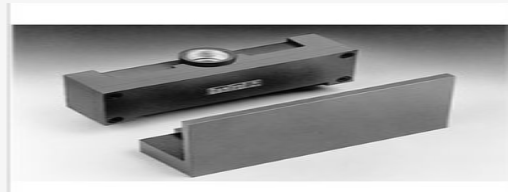What are the applications of door magnetic sensors in access control systems?
Some access control systems are based on the intelligent bus and the same system platform. In this way, smart terminals in smart homes can easily access the doorbell system and management center of the video doorbell system, and realize the functions of intercom, message, photo and access control for visitors. First line of defense.
The door magnetic system in our life can generally be divided into three parts: door magnetic switch, door magnetic sensor (detector), and door magnetic alarm. Some access control systems are based on the intelligent bus and the same system platform. In this way, smart terminals in smart homes can easily access the doorbell system and management center of the video doorbell system, and realize the functions of intercom, message, photo and access control for visitors. First line of defense. These can also be equipped with smart sensor cards and fingerprint locks at the same time, which can realize intelligent linkage, such as synchronous disarming alarm, turning on the corresponding lights or modes.

The working principle of wireless door sensor
The wireless door magnet is composed of a wireless transmitting module and a magnetic block. There are two components of a "steel spring tube" at the two arrows of the wireless transmitting module. When the distance between the magnet and the steel spring tube is kept within 1.5 cm The steel spring tube is in the disconnected state. Once the distance between the magnet and the steel spring tube exceeds 1.5 cm, the steel spring tube will close, causing a short circuit, and an alarm signal will be emitted to the host at the same time. The wireless door sensor is used to monitor the opening and closing status of the door. When the door is opened for any reason, the wireless door sensor immediately emits specific radio waves to alert the host from a long distance.
The wireless alarm signal of the wireless door sensor can transmit 200 meters in open areas and 20 meters in ordinary houses, which is closely related to the surrounding environment. The wireless door sensor generally uses a power-saving design. When the door is closed, it does not emit radio signals. At this time, the power consumption is only a few microamperes. When the door is opened, it immediately emits a wireless alarm signal for about 1 second, and then stops automatically. At this time, even if the door is left open, it will not transmit anymore. This is to prevent the transmitter from continuously transmitting and causing the internal battery power to run out and affect the alarm. The wireless door sensor also has a battery low voltage detection circuit. When the battery voltage is lower than 8 When the voltage is low, the LP light-emitting diode below will light up. At this time, you need to immediately replace the special battery of the A23 alarm, otherwise it will affect the reliability of the alarm.
The wireless door sensor is generally installed above the inside of the door. It consists of two parts: the smaller part is a permanent magnet and a permanent magnet is used to generate a constant magnetic field. The larger is the wireless door magnet body. There is a normally open reed switch. When the permanent magnet and the reed switch are close together (less than 5 mm), the wireless door magnetic sensor is in a waiting state. When the permanent magnet leaves the reed switch a certain distance, the wireless door The magnetic sensor immediately transmits a 315MHZ high-frequency radio signal containing an address code and its own identification code (that is, a data code). The receiving board judges whether the same alarm system is the same by identifying the address code of the radio signal, and then recognizes it by itself. Code (that is, data code) to determine which wireless door sensor alarm.
How Wired Door Magnetic Sensors Work
In the smart home access control system, the door magnetic switch is responsible for whether the door magnet is energized, energized with magnetism (closed door), de-energized and demagnetized (open door), the door magnet is installed on the door and the door cover, and the switch is installed in the house. Door closers can generally withstand a pulling force of 150 kg.
Wired door magnets are more concealed for embedded installations. The induction of the opening and closing of doors and windows is suitable for wooden or aluminum alloy doors and windows to issue wired normally closed / normally open switching signals. The door sensor is used to detect whether doors, windows, drawers, etc. have been opened or moved illegally. It consists of a wireless transmitter and a magnetic block. The door magnetic system is actually the same as the bed magnetic principle. Here, the door sensor is taken as an example.
Application of door magnetic system in real life
This is a common type of concealed door sensor on the market. There is a magnet inside the one end without a wire, and a reed switch and other components inside the low end with a wire. When the magnet approaches, the wire outputs a closing signal. When away, the two wires output an open circuit signal. The end without wires is installed on the top of the door, and the end without wires is installed on the door frame. When the door is closed, the two ends just overlap and approach. There are also some door sensors on the market that are square and suitable for surface-mounted applications.
If you want to know more, our website has product specifications for the door magnetic sensors, you can go to ALLICDATA ELECTRONICS LIMITED to get more information

